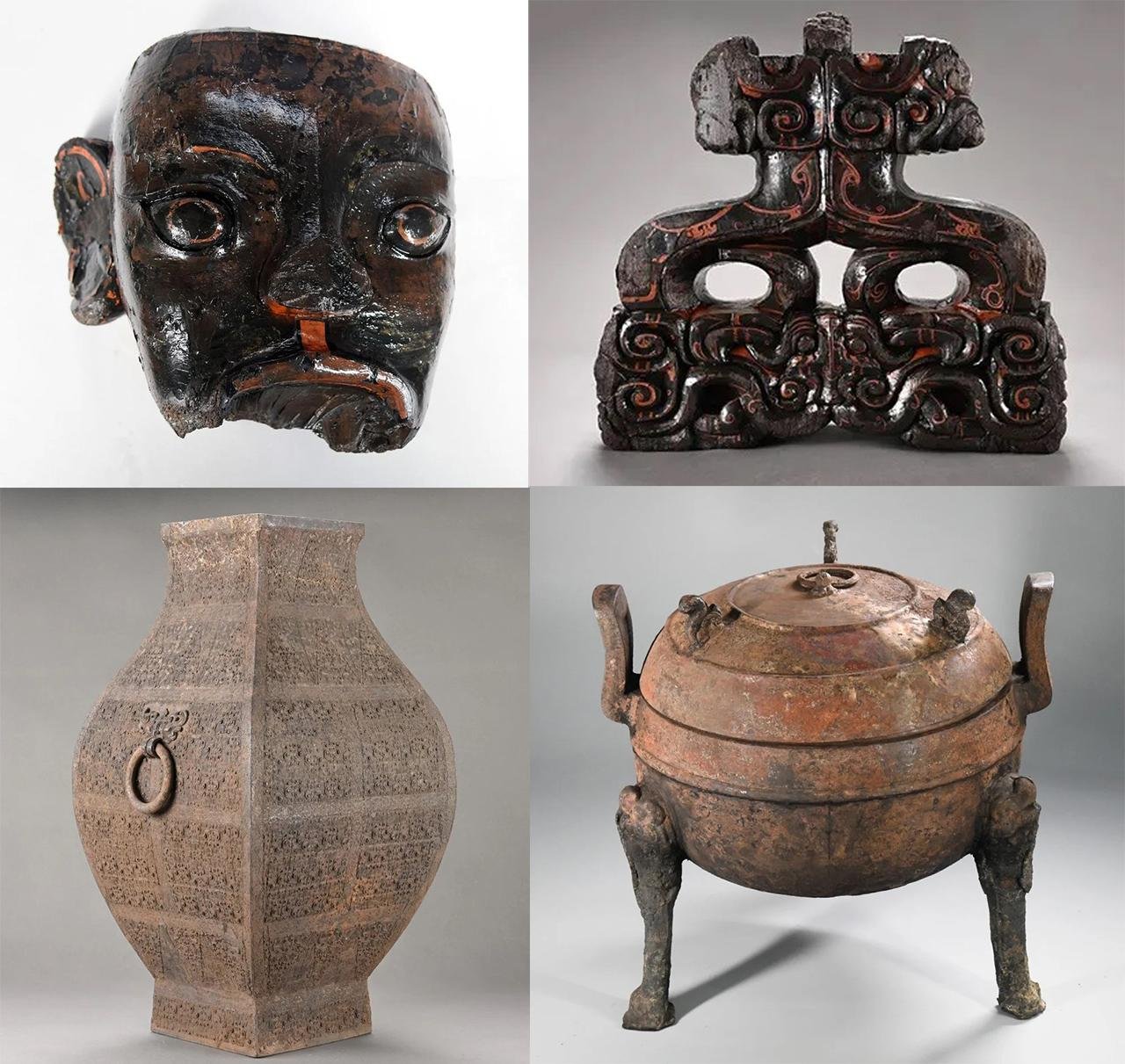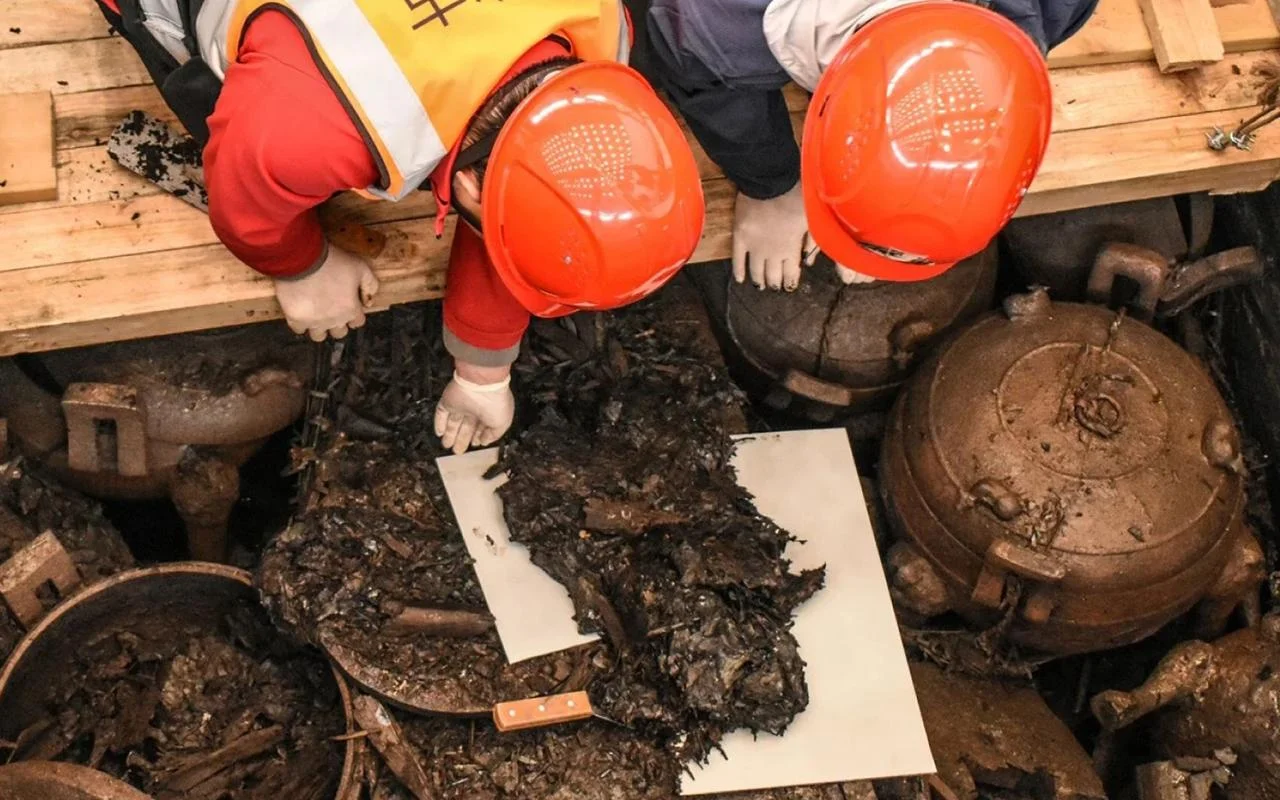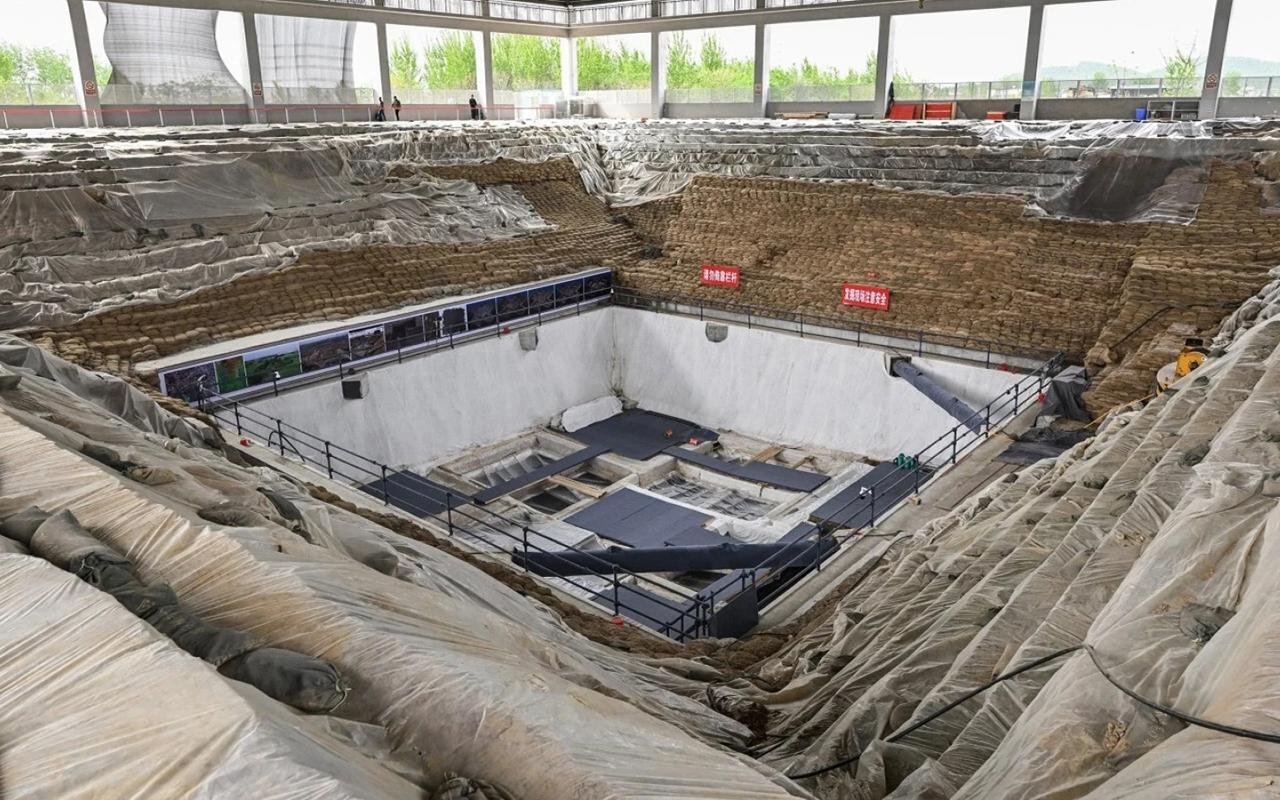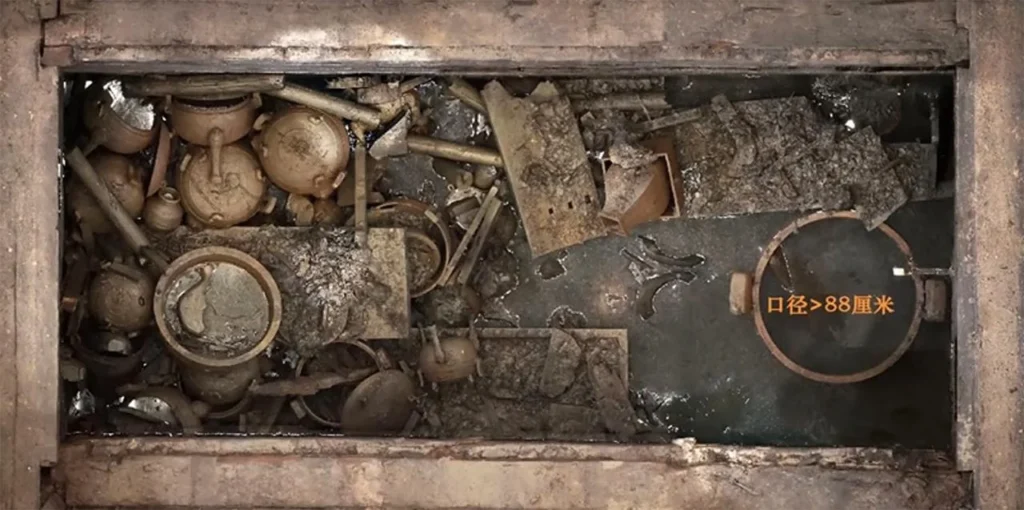In the heart of eastern China, a remarkable archaeological discovery has captivated the attention of historians, archaeologists, and history enthusiasts alike. Nestled near the city of Huainan in Anhui province, a lavish tomb dating back over 2,200 years has been unearthed, shedding new light on the powerful Chu state and its role in the unification of ancient China.
This monumental find, spanning an impressive 1.5 square kilometers, is believed to be the largest and most intricate tomb ever discovered from the Chu era. The opulent contents and elaborate structure of the tomb suggest that it may have been the final resting place of an emperor or other high-ranking figure from this influential state.
As archaeologists delve deeper into the tomb’s secrets, they are uncovering a trove of cultural relics that offer unprecedented insights into the politics, economy, and technology of the Chu civilization. From bronze ritual vessels and musical instruments to lacquerware and even well-preserved plant remains, the artifacts recovered from this site have the potential to rewrite our understanding of this pivotal period in Chinese history.
The Significance of the Chu State
The Chu state was a powerful regional kingdom that flourished during the Warring States period (475-221 BCE), a tumultuous era marked by constant political and military struggles among various states vying for dominance. Situated in the Yangtze River basin, the Chu state was known for its rich cultural heritage, advanced agricultural practices, and formidable military might.

During the late 3rd century BCE, the Chu state was under increasing pressure from the rising Qin state, which eventually conquered and absorbed it into the first unified Chinese empire under the Qin dynasty. This transition period was a critical juncture in Chinese history, as it paved the way for the consolidation of power and the establishment of a centralized imperial system.
The discovery of this lavish Chu tomb, therefore, offers a unique window into the final years of the Chu state’s independence and the complex political and cultural dynamics that shaped the unification of China. By studying the contents and structure of the tomb, archaeologists hope to gain a deeper understanding of the Chu’s social hierarchy, religious beliefs, and technological advancements, as well as the broader societal changes that occurred during this pivotal moment in history.
Uncovering the Tomb’s Treasures
The excavation of the Wuwangdun tomb site has been an ongoing process, with archaeologists from the Anhui Provincial Cultural Relics and Archaeology Institute and the National Cultural Heritage Administration working diligently to uncover and preserve its remarkable contents.
One of the most significant finds within the tomb is a central coffin adorned with over 1,000 written characters, providing invaluable insights into the identity and status of the tomb’s occupant. While the identity of the individual buried in this lavish tomb has not yet been conclusively determined, there is speculation that it could be King Kaolie of Chu, based on historical records and the grandeur of the burial site.

In addition to the inscribed coffin, the tomb has yielded a wealth of other artifacts that have never before been seen in a Chinese tomb, including:
- Bronze ritual vessels: These ornate vessels, used for ceremonial purposes, offer clues about the religious and cultural practices of the Chu state.
- Musical instruments: Discoveries of ancient musical instruments, such as bells and chimes, suggest that the Chu people had a rich musical tradition and may have used music in their religious or cultural ceremonies.
- Lacquerware: The exquisitely crafted lacquered objects, including boxes and furniture, showcase the Chu’s advanced woodworking and lacquering techniques.
- Plant remains: Well-preserved plant materials, such as seeds and grains, provide insights into the Chu’s agricultural practices and dietary habits.
These remarkable finds have not only captivated the archaeological community but also shed light on the technological and cultural sophistication of the Chu state during this pivotal period in Chinese history.
Challenges and Preservation Efforts
Despite the tremendous significance of the Wuwangdun tomb, it has faced significant challenges over the centuries, including looting and environmental degradation. Looters have targeted the site for centuries, seeking to plunder its valuable artifacts, while natural forces such as erosion and weathering have also taken a toll on the tomb’s contents.

While researchers have not conclusively determined who was buried there, there is speculation that it could be King Kaolie of Chu, based on historical records and the grandeur of the tomb itself.
However, in recent years, local authorities, supported by the National Cultural Heritage Administration, have made concerted efforts to safeguard the site and its archaeological integrity. Sophisticated techniques, such as digital scanning, surveying, and infrared imaging, have been employed to meticulously document and analyze the tomb’s contents, ensuring that the valuable information they contain is preserved for future generations.
Furthermore, plans are underway to establish an archaeological ruins park at the Wuwangdun site, which will showcase the remarkable findings and educate the public about this important chapter in Chinese history. By creating a dedicated space for the display and interpretation of the tomb’s artifacts, the authorities hope to raise awareness about the significance of this discovery and its role in shaping our understanding of the Chu state and the unification of ancient China.
Conclusion
The unearthing of the lavish 2,200-year-old Chu tomb near Huainan, China, is a remarkable archaeological achievement that has the potential to rewrite our understanding of one of the most pivotal periods in Chinese history. The tomb’s opulent contents and elaborate structure suggest that it may have been the final resting place of a Chu emperor or other high-ranking figure, offering unprecedented insights into the politics, economy, and culture of this powerful state.
As archaeologists continue to meticulously excavate and analyze the tomb’s artifacts, they are uncovering a treasure trove of information that could shed new light on the Chu’s technological advancements, religious beliefs, and societal structure. This discovery is not only a testament to the ingenuity and resilience of the Chu people but also a reminder of the enduring importance of archaeological research in preserving and understanding our shared human heritage.
Through the establishment of an archaeological ruins park and ongoing preservation efforts, the Wuwangdun tomb will continue to captivate and educate audiences for generations to come, offering a glimpse into the rich and complex history of ancient China.

